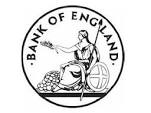
The recent Bank of England paper embracing post-Keynesian endogenous money creation has Steven Keen punching Paul Krugman on the nose today at locked-Business Spectator:
Stage one in the textbook money creation model is that the Fed (or the Bank of England) gives the banks additional reserves — say $100 billion worth. Then in stage two, the banks lend this to their customers, who then deposit it right back into banks, who hang on to 10 per cent of it ($10 billion) and lend the remaining $90 billion out again. This process iterates until an additional $1 trillion of deposits are created, so that the reserve ratio is restored ($1.1 trillion in reserves, $11 trillion in deposits).
This is the traditional “fractional reserve banking” model of money creation. The BOE is now arguing that:
• Rather than banks receiving deposits when households save and then lending them out, bank lending creates deposits. (p. 1)
• In normal times, the central bank does not fix the amount of money in circulation, nor is central bank money ‘multiplied up’ into more loans and deposits… (p. 1)
Keen the turns to Krugman:
I will in particular be curious to see whether Paul Krugman notes this paper, and how he reacts to it. Krugman has been the most visible and aggressive defender of the proposition that banks don’t matter, with this including throwing a haymaker at me for making the case that the Bank of England is now making.
…he wrote: “Banks are just another kind of financial intermediary, and the size of the banking sector — and hence the quantity of outside money — is determined by the same kinds of considerations that determine the size of, say, the mutual fund industry.”
Keen is right and Krugman is wrong. Fractional reserve banking went out with arc, except in a few places like China. Reserves don’t limit lending only capital does.
How? When a bank creates a loan it also creates a deposit so, in theory, there is no limit how many loans/deposits that can be created. But there are still constraints. To prevent banks from lending infinitely against an ever declining capital base, Basel III requires them to hold a ratio of capital versus the amount of loans. Capital takes the form of long-term sub-ordinated debt, equity, reserves etc.
This is modern monetary theory (MMT) and to this point it makes perfect sense. It starts to lose its way when MMT practitioners claim that because loans create deposits and we issue our own currency, there is no limit, ever, on lending. At its most extreme this argument concludes we could have an employment guarantee because debt just doesn’t matter, ever.
The problem with this is that the economy is not closed. We exchange goods and services with other economies and they lend to our banks the capital (and equity) to expand our lending. They don’t want to be paid back in devalued currency and so they won’t lend any more if they see excessive monetary creation. Of course you could close the border and let the central bank keep lending to the banks but that’s hardly realistic.
Western banking systems are post-Keynesian but markets are monetarist.

